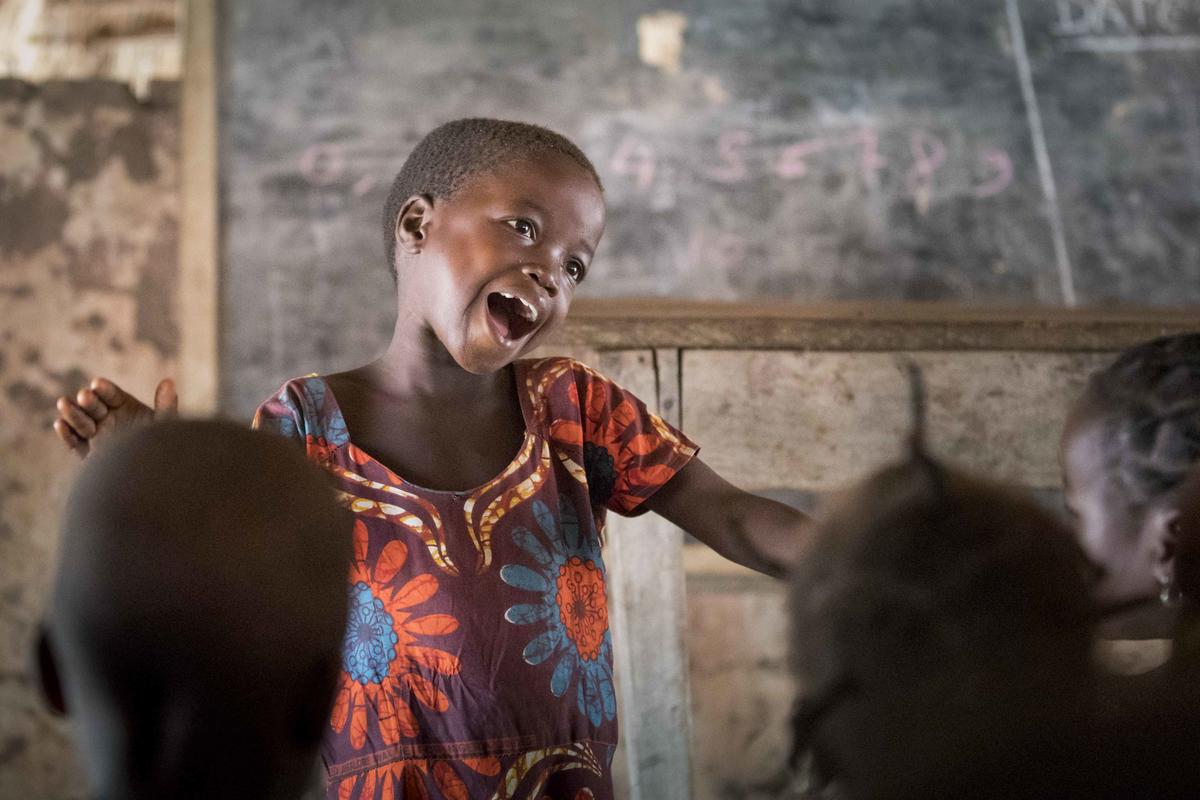Taking the plunge: Swimming lessons help integration in Norway
Taking the plunge: Swimming lessons help integration in Norway

GRIMSTAD, Norway, February 15 (UNHCR) - As a strong swimmer in a nation of mainly nomadic camel herders, Abdullahi Yusuf Jibril was always a little different. But today, as a Somali refugee in Norway, he is really making a splash.
The 26-year-old first arrived in Grimstad, a small town on Norway's south-west coast, back in 2013. After taking a course at the local swimming pool, he qualified as an instructor and now teaches other refugees how to swim.
"I am very proud of myself, since I have only lived in Norway less than three years," he says. "I love swimming and I like teaching people, both children and adults. And I want to integrate myself in the country and learn how to communicate with others."
Abdullahi plays a major role in Grimstad's efforts to integrate new arrivals, helping refugees to dive - quite literally - into Norwegian society. Swimming lessons are seen as both a life-saving skill and a tool to help refugees gain confidence and settle in.
They are also part of a national drive to encourage local authorities to improve immigrants' swimming skills after a number of drownings. In 2015, the government assigned NKR 7 million (€0.7 million) in grants to municipalities earmarked for swimming lessons. As a result, Grimstad's swimming programme for refugees has grown rapidly.
For Abdullahi, who arrived in Norway via Turkey and across the Mediterranean, teaching swimming is now a part-time job that he can do when he is not studying full-time on the official introduction program for refugees.
"For me, the most important thing is to teach children how to swim," he says. "Whether it is refugee children or Norwegian children."
"Even though I cannot communicate with some of the people we teach, I can demonstrate my skills and use a lot of body language. We always get positive feedback from parents who tell us their children are getting better."

Basem Ajam, a furniture maker from Damascus, had never even heard of Norway before the summer of 2015. Then, he was selected to leave Lebanon, where he had fled from Syria, under a scheme which will see Norway take up to 8,000 Syrian asylum seekers over the next three years,
Now his two eldest children, Omar, 10, and Shayma, 9, are gleefully taking to the water - thanks to Abdullahi. "The kids also play football, but they lean towards swimming, they like it," says Basem. On his first day of school, Omar joined classmates at the beach. When he is asked what he did last summer, he says: "I swam."
Grimstad Swimming Club is central to Norway's refugee programme. Run by volunteers, its motto - "Fun, cohesion and competition" - neatly sums up the ethos. Norway's Swimming Federation, of which the club is part, has an explicit aim to promote multiculturalism through social integration and says the social aspect of swimming promotes new friendships and refugee mental health.
It is also a lesson in social etiquette. "That is integration," says Astrid Aasen, a refugee consultant in Grimstad. "Getting used to the rules and adjusting."

At 8 am every Sunday morning, Tanya Røskar's "ladies", as she calls them, brave ice and snow-storms to wait for her on the steps of the swimming pool. The "ladies" are Muslim refugee women, here for their weekly women-only swimming lesson.
"Water is a big part of life in Norway, so swimming is an integral part of society," says Tanya, a volunteer swimming instructor.
There are often hugs and tears, she says, because the women are so moved by their achievements. A few weeks ago eight of them were too scared to jump in, but by the end of the lesson all but one were diving in head first.
"By learning to swim you become more integrated and you can be part of this way of living without feeling that it's scary, without a fear of the unknown," Tanya says. "It is important for integration into Norwegian society, and for the Norwegian members of the club as well, to have people from other nationalities to blend together training, working and having fun, learning together."
Hakime Moradi from Afghanistan is one of the women at Tanya's classes. "I cannot swim with the men, but I swim in the women's group on Sunday morning," she says. "I don't swim well, and it is easier for me in the women's group. I get to talk with the other women, and we have a good time together."
Her husband, Safar Amiri, and two teenage sons, Sadjad and Mohammad, are also among around 80 refugees in Grimstad who are learning to swim - an essential life skill in this country of lakes, islands and fjords.
Starting life in a strange country is like jumping in at the deep end. But Grimstad hopes that, with this new skill, refugees will have a better chance of staying afloat.
"It is amazing for me to get into the position in which I am today after only two years, and that my experiences can benefit others," Abdullahi says. "I am very happy to be teaching swimming."
By David Crouch, Norway








